EXERCISE 7.2
1. In an isosceles triangle , with , the bisectors of and intersect each other at . Join to . Show that :
(i)
(ii) bisects
Show Answer
Solution

(i) It is given that in triangle
(Angles opposite to equal sides of a triangle are equal)
(Sides opposite to equal angles of a triangle are also equal)
(ii) In and ,
(Common)
Given
(Proved above)
Therefore, (By SSS congruence rule)
(CPCT)
bisects .
2. In is the perpendicular bisector of (see Fig. 7.30). Show that is an isosceles triangle in which .
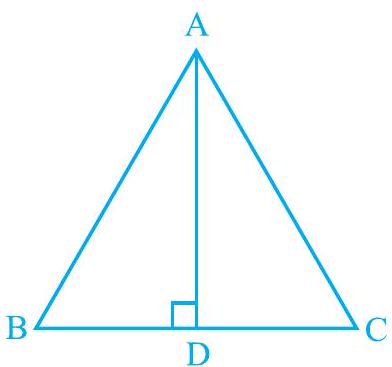
Fig. 7.30
Show Answer
Solution
In and ,
(Common)
Each 90)
is the perpendicular bisector of
(By SAS congruence rule)
Therefore, is an isosceles triangle in which .
3. is an isosceles triangle in which altitudes and are drawn to equal sides and respectively (see Fig. 7.31). Show that these altitudes are equal.
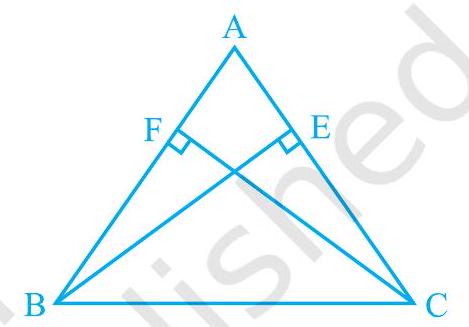
Fig. 7.32
Show Answer
Solution
In and ,
and Each
(Common angle)
(Given)
(By AAS congruence rule) (By CPCT)
4. is a triangle in which altitudes and to sides and are equal (see Fig. 7.32). Show that
(i)
(ii) , i.e., is an isosceles triangle.

Fig. 7.32
Show Answer
Solution
(i) In and ,
and Each )
(Common angle)
(Given)
(By AAS congruence rule)
(ii) It has already been proved that
5. and are two isosceles triangles on the same base BC (see Fig. 7.33). Show that .
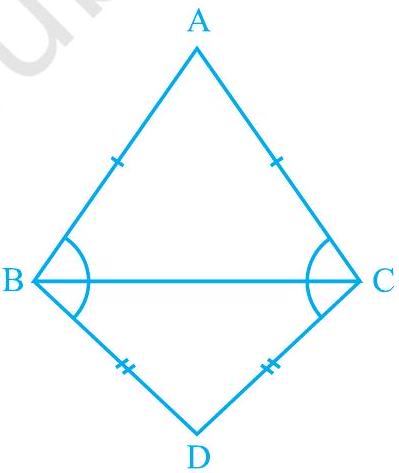
Fig. 7.33
Show Answer
Solution
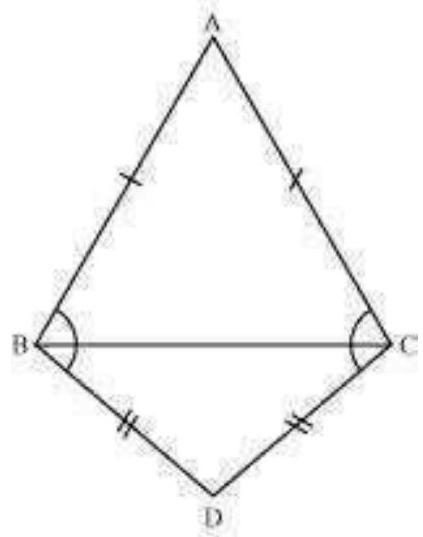
Let us join .
In and ,
(Given)
(Given)
(Common side)
(By SSS congruence rule)
6. is an isosceles triangle in which . Side is produced to such that (see Fig. 7.34). Show that is a right angle.
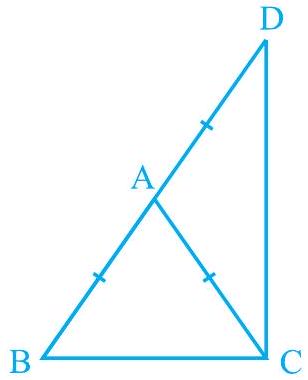
Fig. 7.34
Show Answer
Solution
In ,
(Given)
(Angles opposite to equal sides of a triangle are also equal)
In ,
ADC (Angles opposite to equal sides of a triangle are also equal)
In ,
(Angle sum property of a triangle)
7. is a right angled triangle in which and . Find and .
Show Answer
Solution
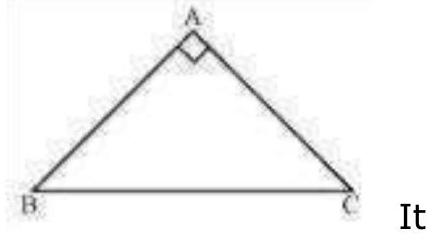
It is given that
(Angles opposite to equal sides are also equal)
In
(Angle sum property of a triangle)
:
8. Show that the angles of an equilateral triangle are each.
Show Answer
Solution
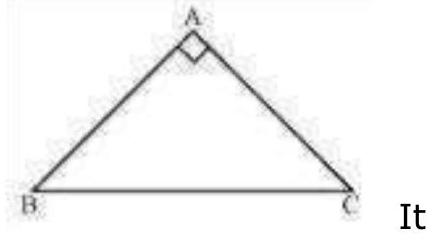
Let us consider that is an equilateral triangle.
Therefore,
(Angles opposite to equal sides of a triangle are equal)
Also,
(Angles opposite to equal sides of a triangle are equal)
Therefore, we obtain A
In ,
Hence, in an equilateral triangle, all interior angles are of measure .



















